Jan 1st Birding on Sheppey
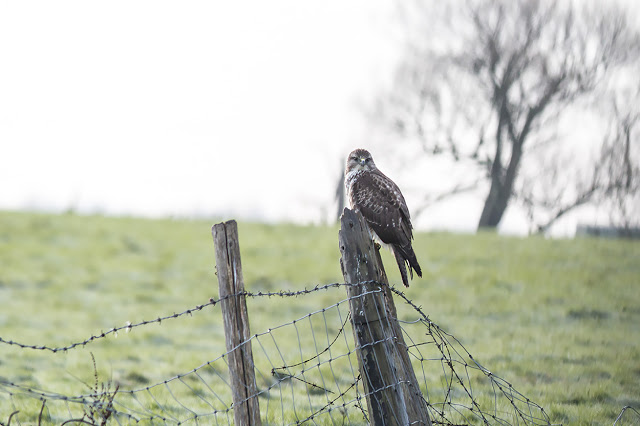
The bubbling, melancholy call of the Curlew was gently rising on the light breeze as we stood looking out across the grey, desolate, open expanse of tidal estuary, of the river Medway. This particular point, know as Funton Creek, was separating the steel chimneyed, industrial expanse of the Isle of Grain, from mainland Kent.
While these were not the first birds of the year, that accolade going to Wood Pigeon. Followed by Herring Gull and Ring-Necked Parakeet. This was the first “real” birding of 2016. We were ready for some Jan 1st Birding on Sheppey.
It was a little after 9am as I stood; in the freezing, biting wind, as it whipped across the cold open water and salt marsh; scanning through the distant wader and duck flocks, at my fathers side; for the first time in many years; on this auspicious date.
Jan 1st Birding on Sheppey
Looking out across the tract of thick, grey mud it was clear the tide was some way out. But we were still able to pick our way through numerous coastal species; Curlew, and Redshank making up the bulk; but every so often small groupings of tiny Dunlin pecked away in the dirty, stinking, mud. While elegant Grey Plover strutted around on their long legs, posturing to their more aesthetically pleasing cousins the Golden Plover.
A short distant down river a small party of Black Tailed Godwit could be found stabbing their long, majestic beaks deep into the river mud, probing with their sword like bills for a long worm or invertebrate. A band of Knot could be seen huddled up, sheltering from the early chill, against a band of thick, tussocky grass. In the far distance, over the little remaining, dribble of water, a raft of a few hundred Avocet in all their monochromatic, porcelain, beauty, made up the remainder of the wading birds.
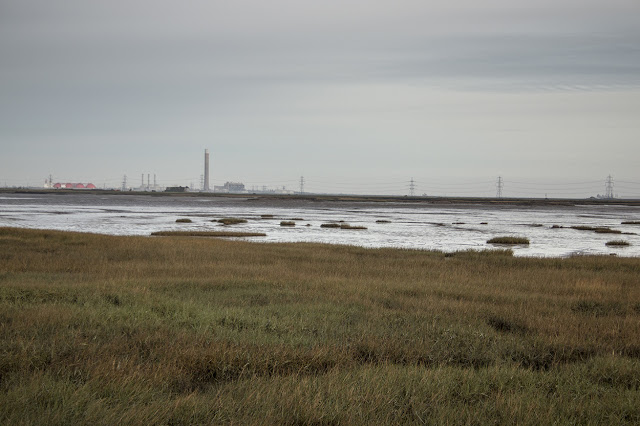 |
| Sheppey as seen from Funton Creek. Jan 1st Birding on Sheppey |
Across the Water
Across the river skeins of Canada and Greylag Geese were flying back and forth. With large Herring Gulls and the odd Cormorant keeping them company. Mid channel a substantial party of grey, sleeping ducks could be seen. Close inspection showed them to be the chocolate brown headed, sharp tailed, Pintail. While around them Wigeon casually swept their specially evolved bills through thick clumps of mud, and Eurasian Teal picked at the left overs.
Over our shoulders, in amongst the Birch and Larch trees that bordered the small paddocks, a large finch flock began calling from the tops, mainly the jangling, musical call of Goldfinch, but a few, lighter noted calls of their less common cousins the Siskin could also be made out.
There can be little in the birdwatchers diary as exciting as birding on the first day of a new year. Every bird takes on new significance as even the more mundane Black-headed Gull, flying over in large groups, become something of note.
Island Paradise – Jan 1st Birding on Sheppey
Leaving the estuary far behind we headed off of mainland Britain and onto the Isle of Sheppey, our first destination on the island was the grim reality of the British seaside town, in all its glory, the home of the holiday park: Leysdown-on-sea. Passing through the ramshackle, drab, little seaside “village” we paused at the cold, wintry beach to search for more passing sea birds.
Again Redshank and Curlew could be found in large numbers picking their way across the wet, sandy beach, with the occasional Turnstone flipping the local pebbles further out, both Lesser and Greater Black-backed Gull could be found loafing at the waters edge and a Common Gull or two passed over head.
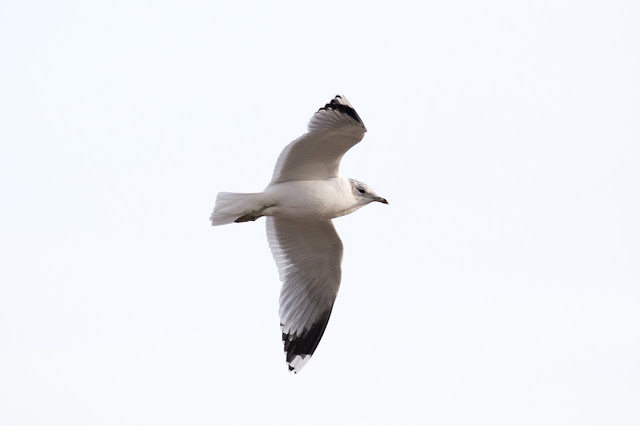 |
| Common Gull in Flight Canon 70D 400mm @ f/6.3 1/1250 ISO 200 |
Shellness
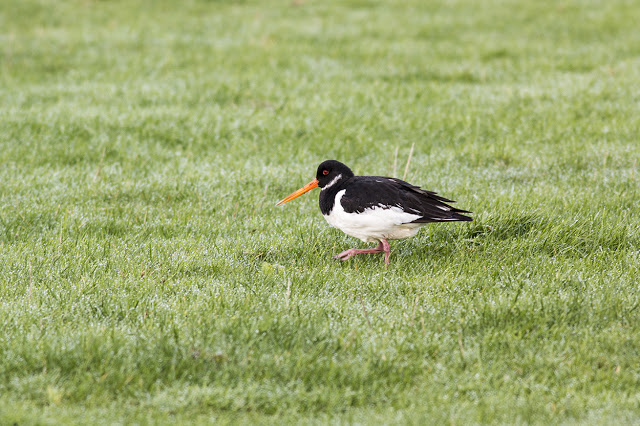
Further on along the road towards Shellness, but before the Nature Reserve or Nudist Beach, a pair of Stonechat were found flitting about in the long grasses and tall weeds beside the deteriorating road; while a lone Oystercatcher could be found mixing with a few local ponies in a small paddock, on the opposite side.
Driving back passed the empty beach, perched on top of one of the small brick toilet blocks a Kestrel rested after a brief to tussle with one of the local Magpie. She posed beautifully for us all, while she scanned the area around her before dropping down a few feet away into the long rough ground along side the road, where she collected a juicy worm before flying off a short distance to tuck into her quarry in relative peace.
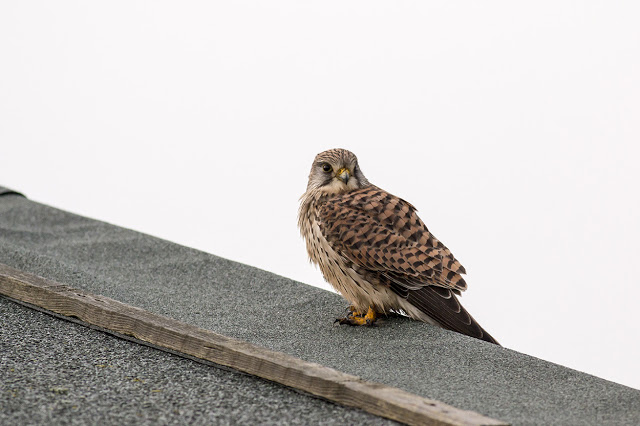 |
| Female Kestrel – Leysdown-on-sea Canon 70D 400mm @ f/6.3 1/1250 ISO 500 |
The Road to Harty Ferry
Entering the Road to Harty Ferry the first hedge row that we chanced upon was heaving with winter thrush. Mainly Fieldfare and Blackbird but also one or two of their smaller cousin the Redwing. After checking through for something more exciting we moved on at roughly the same time as the flock took to the air; allowing us to note their numbers were well into the hundreds.
As we crested the brow of the hill the south side of the island opened up before us. Mile after mile of lush fields. Green with winter barley, fed by the recent rains. Stretched out before us, broken only by the remaining vestiges of hedge and miles of meandering tributaries and ditches, leading all the way across to the salt marshes and eventually to the Swale again. As we began our first scan of this haven for harriers and raptors a female Marsh Harrier came into view from over the hill to the east. And began to quarter the fields. This would be the first of many that we saw through the day from all over the island.
To the west the thicker water channel of Capel Fleet held a large raft of Coot as well as a few commoner ducks and a pair of Little Grebe; who spent their time diving up and down hunting for small fish beside the tiny expanse of reed bed. Beside the water a brace of Red-legged Partridge could be found clambering across a huge pile of dung and in the distance an enormous flock of Mute Swan could be seen, numbering well into their hundreds, while yet more Marsh Harriers hunted above them.
Raptor Watchpoint on our Jan 1st Birding on Sheppey
Before we arrived at the specially built raptor watch point, we were lucky enough to encounter a small group of the increasingly scarce Corn Bunting as they waited out the passing raptors in the tops of one of the few large bushes sat in the middle of one of the water meadows. At the watch point itself a Grey Heron could be seen precariously balanced beside a steel grey gate while Chaffinches and Starlings fed in the mud at its feet.
A walk to scan from the top of the ramp gave us many more views of Marsh harriers and Common Buzzards as they slowly flew the channels and ridges of the surrounding fields, this included seven harriers in one scope view! While scanning across the fields my father spotted, sat on a very distant fence post, an amazing Peregrine Falcon bringing our raptor species count to five for the day.
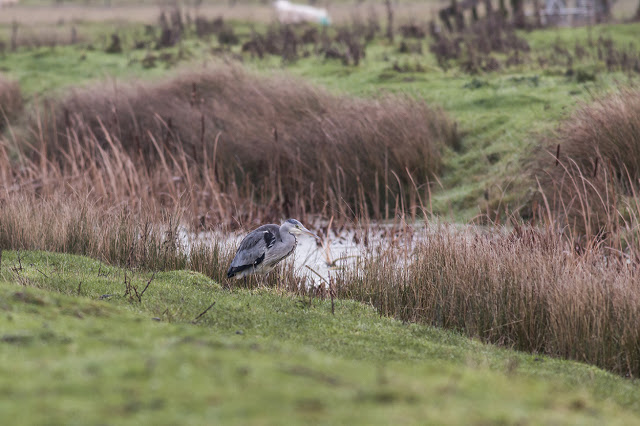 |
| Grey Heron Jan 1st Birding on Sheppey |
Further Along the Road
We continued on our journey, heading further along to the end of the road and the Harty Ferry pub. There, from the car-park, we had another great view of the Swale. And across to the nature reserve at Oare. Which allowed us to scan through the little inlets and salt marsh area. Here we were able to pick out a few more Avocet, feeding on the tidal mud. As well as other waders. And finally locate a few Brent Geese and a Little Egret feeding on the salt marsh itself.
After a warming hot chocolate, beside the roaring fire of the pub, we headed back off down the road we had just traveled, passing a multitude of walkers out on their first ramble of the year. As we drove the tarmac, we passed further Little Egrets feeding in the long ditch that follows the course of the road, and finally a very pale Common Buzzard who had our hearts fluttering for a while, before excellent views proved it was just lightly marked common.
Elmley Nature Reserve
Our final destination for the day was Elmley Nature Reserve, once run by the RSPB now back in the hands of the original owners, for those who do not know the area it is an area of rich grassland and water meadow bordering the Swale estuary.
Our journey up the entrance track was mainly filled with breathtakingly close views of the stunning green plover or Lapwing, whose presence mere inches from the car at times allows incredible opportunities to examine the glossy sheen of these fabulous waders; Little Egrets who were feeding in many of the puddles and ditches along the route; with numerous Marsh Harriers and Buzzard also marking the way. Large flocks of Golden Plover and Starling could be seen creating amazing swirling patterns in the grey winter sky as they banked, twisted and turned over the sea wall, before we eventually arrived at the car-park.
One advantage of visiting the reserve with my dad and step mum is that his disabled access allows us to drive the long track to the nearest hides. Rather than have to walk the freezing path. Although I do always feel guilty. This slow approach, in what in effect becomes a mobile hide, along the track gave us lovely views of the small pools along the way. And one Mallard filled pool also contained a further Little Grebe; and our only Gadwall of the day.
Car park & Hides
Just as we were arriving at the disabled car-park, the little lady spotted a Hare as it bolted out from below the sea wall, and ran hell for leather across the long grass. Reaching un-imaginable speeds as it made its way across the open grassland. Parking up, and after a chat with the owners, we settled down to eat our lunch in the warmth of the car. While in front of us male and female Marsh harriers hunted for their own. Once finished, Zoe and I, along with the Little Lady, braved the now freezing winds and headed out to the first hide. A pair of Stonechat accompanying us as we walked.
Settling into the hide the most notable thing was the complete lack of birds on the water in front of us. A lone Little Egret picking its way along the margins was the only living thing we could see from the open shutters. As we waited for an avian spectacle to unfold in front of us (we hoped) another family joined us in the hide. And I must say that their noise made us proud of Bubs ability to respect both the other inhabitants and the birds that should have been around us. The clattering of benches; rustling of crisp packets; and loud voices; didn’t lead to a wildlife rich experience for either group.
Shelducks on the move
After a while movement from the seawall behind us began to grow. As flock after flock of Shelduck and Shoveler began to fly overhead; and land in the distant water meadows in front of us. Large flocks of Lapwing began to rise in the sky; as yet more Marsh Harriers passed low over their positions. And small parties of geese could be seen flying the open fields. After a while the biting cold began to really set into the fingers; and we decided to head back to the warmth of the car.
We slowly began the drive back to the car-park and main track, our party stopping occasionally along the way to check in the pools for various birds, usually the same Mallards as before; or once when a Stoat popped its head up in the grass, and then a few moments later scampered across the track in front of us and down into the long reeds.
Eventually we reached the feeding station in the car park and enjoyed a few moments with a stunning male Pheasant and a couple of Moorhen who were scratching for seed loosed by the House Sparrow and Blue Tit feeding from the plastic feeders above. As the dusk was beginning to creep in, the already cloudy sky began to darken just that little more, and we knew it was time to take up position along the track where we could watch out across the fields for what would come in to roost.
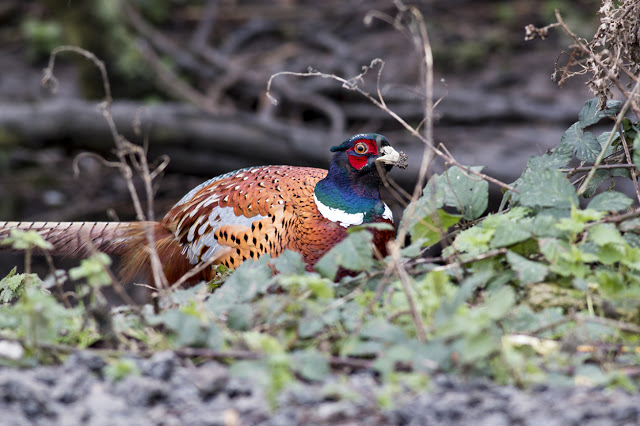 |
| Common Pheasant at the Feeding Station, Elmley Jan 1st Birding on Sheppey |
Waiting for Owls
Parking up where we could see as much open ground as possible. Along side the distant old barn. We began scanning through the water meadows. Carefully checking each broken down old fence post; or discarded piece of farm machinery, in the hope of something large and fearsome. One very pesky Common Buzzard had us all but convinced it was an Owl until it was flushed to flight when its real identity became very apparent.
An hour of scanning turned up nothing new apart from yet more Common Buzzard; Kestrel; and Marsh Harriers; and so we decided to call it a day and head home. As we slowly drove back down the entrance track, passed the multitude of cattle and Egrets; we were stunned to spot a huge, dark raptor perched on on one of the old gate posts. Closer inspection revealed it to be yet another Common Buzzard. But this time the largest, by a long way, of the day.
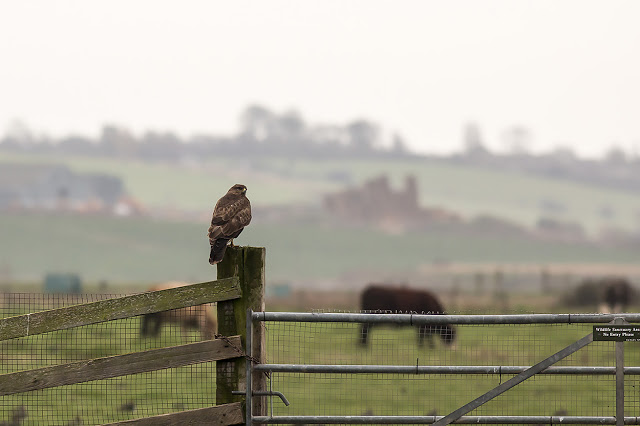 |
| Very Large, dark, Common Buzzard Canon 70D 400mm @ f/6.3 1/100 ISO 500 |
Days End of our Jan 1st Birding on Sheppey
Just as we were leaving the nature reserve. Ready for the long drive home. A stopped car alerted us to the presence of a superb Barn Owl that hunted the across the long grassed fields along side the main road. At first she could be seen hovering and diving into the thick vegetation distantly above the black cattle that shared the fields; before eventually as the dusk descended she crept closer to us.
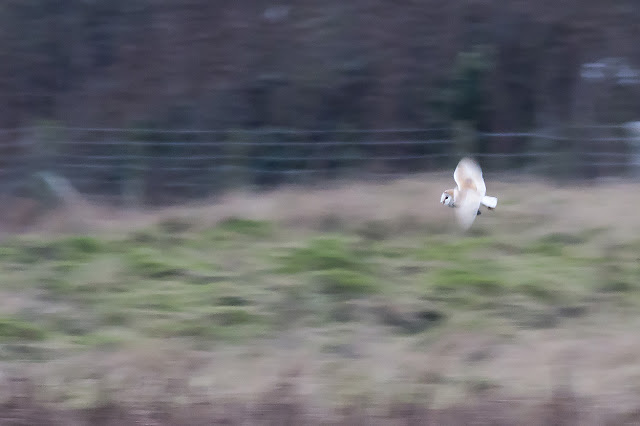 |
| Barn Owl, showing great movement Jan 1st Birding on Sheppey always has an owl! |
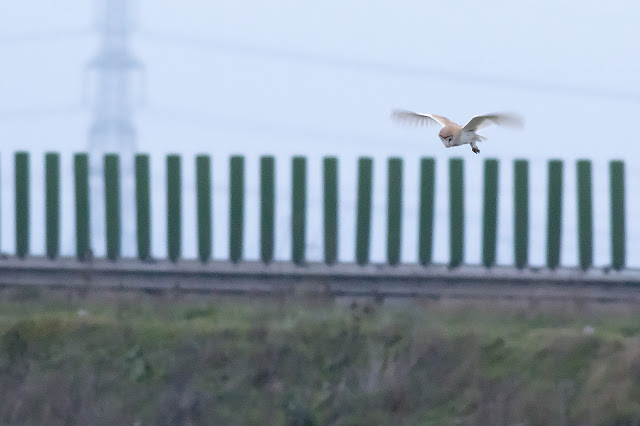 |
| Hovering Barn Owl, with the road behind Canon 70D 400mm @ f/6.3 1/80 ISO 1600 (cropped) |
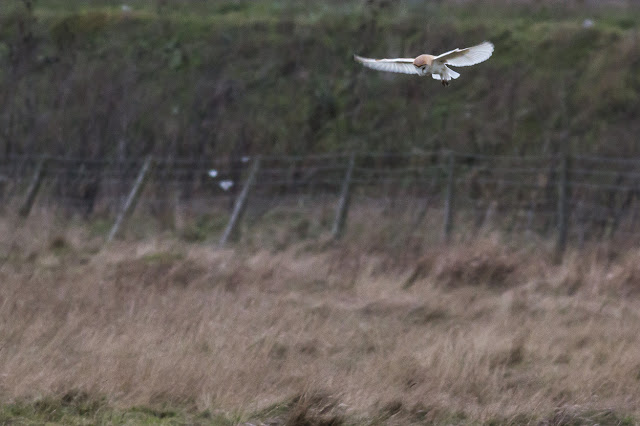 |
| Another of the Barn Owl, hovering Canon 70D 400mm @ f/6.3 1/40 ISO 1600 (cropped) |
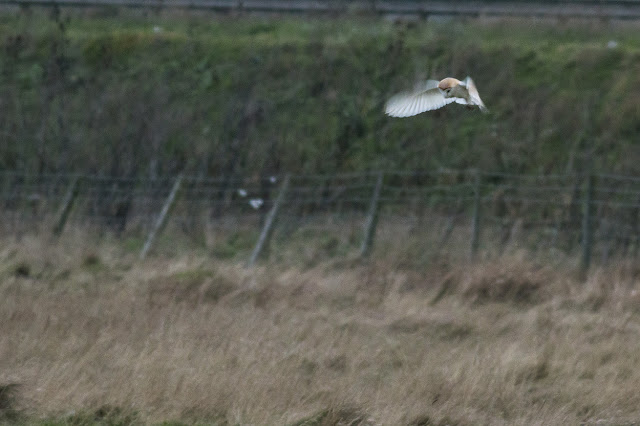 |
| and Another of the Barn Owl, hoveringCanon 70D 400mm @ f/6.3 1/40 ISO 1600 (cropped) |
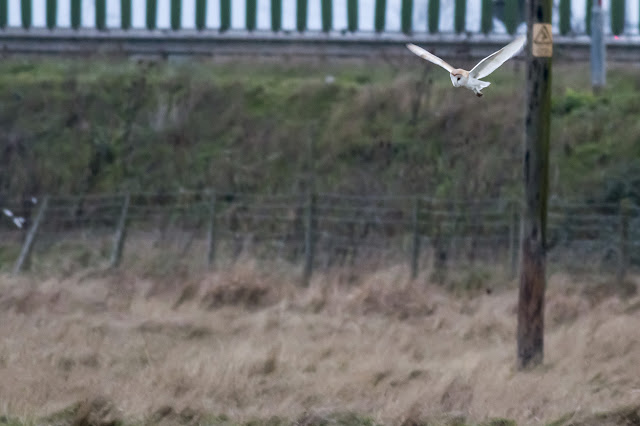 |
| Last of the Barn Owl in Flight shots from Jan 1st Birding on Sheppey |
Did you enjoy Jan 1st Birding on Sheppey? or Find it useful? Then please consider sharing with your friends via the links below.
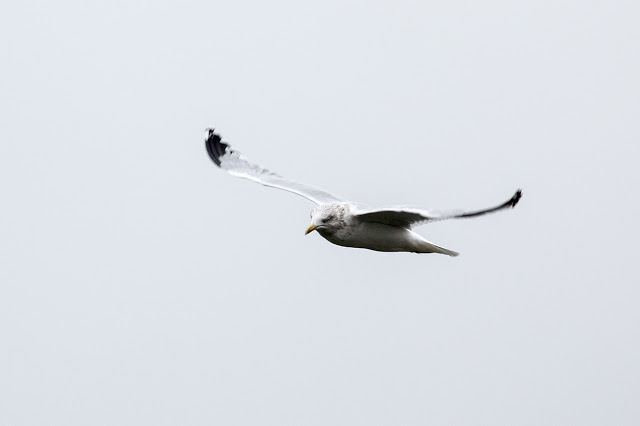




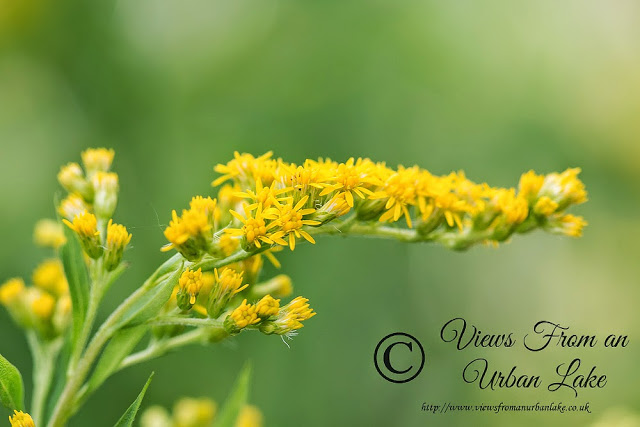
2 Comments
callumswildlifediaries
Really amazing wildlife photos there, particularly of the kestrel! I live quite near there, and sometimes visit Oare marshes nature reserve, which is near Elmley marshes nature reserve.
AshleyBeolens
Thank you for the kind words, I do love North Kent and am fortunate enough to be a regular visitor to many places, Oare is on I don't get to so much but have enjoyed a few memorable visits 🙂